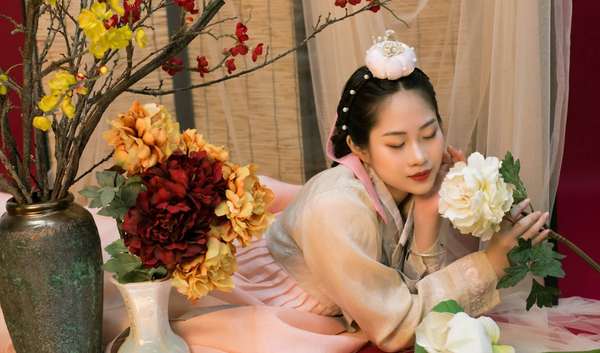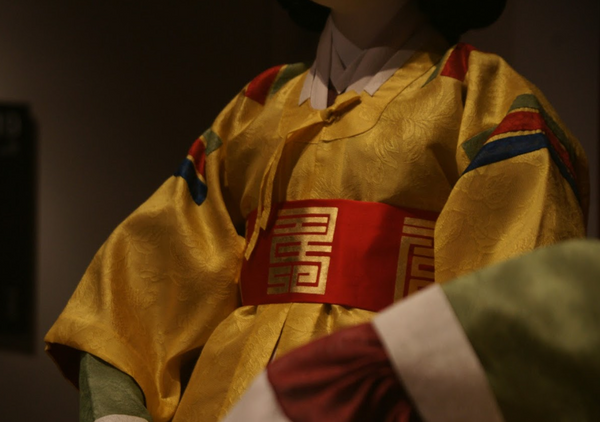White - Pureness and Integrity
Symbolism: White is a symbol of purity and integrity in Korean culture. It is often worn during significant life events, such as weddings and funerals. White Hanboks reflect the wearer's commitment to virtuous values and represent a fresh start.
Red - Passion and Fortune
Symbolism: Red is a colour associated with passion, energy, and good fortune. It is frequently worn during celebrations, weddings, and New Year's festivities. A red Hanbok signifies joy, love, and a positive outlook for the future.
Blue - Tranquility and Stability
Symbolism: Blue represents calmness, tranquillity, and stability. Wearing a blue Hanbok is often associated with a desire for inner peace and balance. It is a popular choice for various formal occasions, conveying a sense of serenity.
Yellow - Royalty and Nobility
Symbolism: Yellow symbolises royalty, wealth, and nobility. Historically reserved for the royal family, yellow Hanboks are now worn on special occasions to convey a sense of regality and a connection to Korea's royal heritage.
Green - Youth and Vitality
Symbolism: Green represents youth, vitality, and growth. It is a popular choice for young individuals and is often worn during Coming-of-Age Day ceremonies. Green Hanboks celebrate the vibrancy and potential of youth.
Pink - Innocence and Femininity
Symbolism: Pink is associated with innocence, femininity, and young love. It is a common choice for young girls and is often worn during celebrations like Doljanchi, a traditional Korean first birthday celebration.

Purple - Wealth and Elegance
Symbolism: Purple conveys wealth, elegance, and sophistication. Historically worn by high-ranking officials, purple Hanboks are chosen for special occasions to showcase a sense of refined taste and prosperity.
Black - Mourning and Formality
Symbolism: Black is a colour associated with mourning and formality. While it is not commonly worn for joyous occasions, it is chosen for funerals and other sombre events to signify respect and remembrance.
Brown - Earthiness and Simplicity
Symbolism: Brown represents earthiness, simplicity, and humility. Brown Hanboks are chosen for their down-to-earth symbolism, often reflecting a connection to nature and a preference for modesty.
Gold - Opulence and Prestige
Symbolism: Gold symbolises opulence, prestige, and wealth. Wearing a gold Hanbok signifies a celebration of prosperity and grand occasions. It is a colour reserved for significant events that warrant a touch of luxury.

Embracing Cultural Significance
Understanding the symbolic meanings behind Hanbok colours adds a layer of cultural depth to this traditional attire. Whether worn for weddings, celebrations, or formal events, the chosen colour not only enhances the visual allure but also communicates a deeper connection to Korea's cultural heritage. As you explore the world of Hanboks, let the colours guide you through a tapestry of traditions and meanings that have stood the test of time.
In your journey of wearing a Hanbok, consider the rich palette before you, and embrace the cultural significance that each colour brings to this timeless attire.



